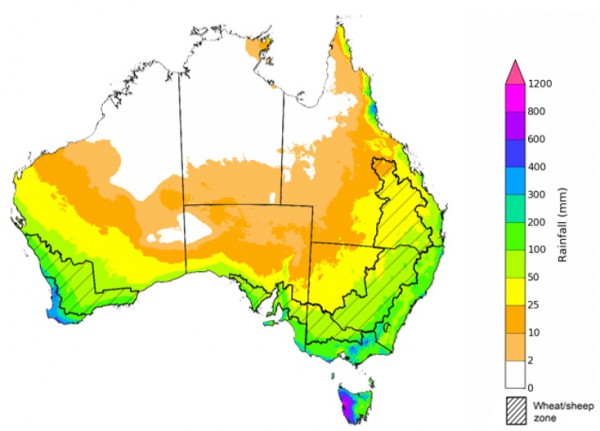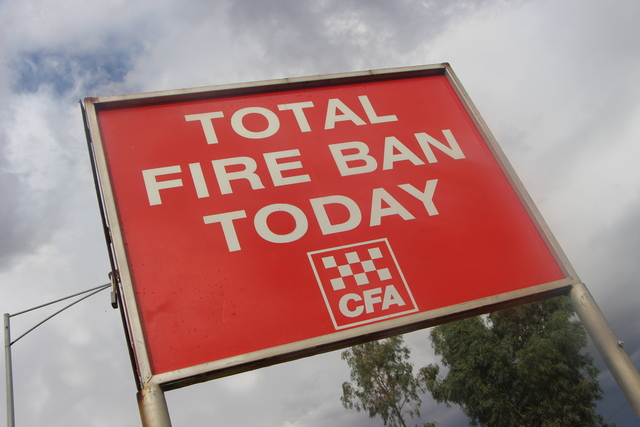WITH more than 40mm falling this week to midnight Wednesday, increased warnings of El Nino affecting the cropping season might seem a little premature.
But ABARES, Vic Drought Hub and Victorian Farmers Federation have all issued cautious, but serious, El Nino “watch” advisories in the past few days.
However, the latest ABARES charting indicated north-west Victoria might dodge the initial bullet, expected to receive somewhere between 50mm and 100mm between now and August.
With the ENSO (El Nino–Southern Oscillation) outlook at watch, it means ENSO is currently neutral.
Despite that, Vic Drought Hub regional director Fiona Best still encouraged producers to plan ahead.
Ms Best, also Birchip Cropping Group chief executive, said while a watch was no guarantee El Nino would occur, it signalled some of the typical signs were in place.
“Therefore, it’s a good time for all farm businesses to put various elements of their operation under a drought-resilience microscope,” she said.
“This process entails reviewing and assessing the capacity of an entity to withstand extended periods of dry weather and, should it happen, drought.
“Some elements will be common across all enterprises, with others enterprise-specific – in our region we can break these elements down to business, finance, people, livestock and cropping.
“For example, when analysing whether the finances are drought-proof, it is important to understand your business’ equity ratios, cost of production, cash flow requirements and reserves, as well as the ability to access cash.”
Ms Best said the people in any enterprise – owners and staff – were just as important to examine as other elements.
She said how the business managed this most valuable asset needed to be considered.
“Are there shared goals and aspirations within the business, and how can each person be actively building resilience to draw upon in dry times,” she said.
“Is there flexibility for people to build connections through local clubs, time allocated to activities outside of the farm business? It’s all important.
“For those with livestock, looking through a drought-resilience microscope means knowing fodder requirements and your supply – is there enough, if so, for how long? Will feed need to be bought in? When? What? From where? Do I have a stock containment area established and is it fit for purpose?”
Reflecting on the sowing season and how smoothly it ran was another suggestion.
Ms Best said questions could include whether a crop type or variety, sowing times, or paddock preparation needed to be changed.
“On the Vic Hub website, we also have some excellent information about farm finance, springing from our research and farmer consultations, which identified the important role of all farm advisers in building strong farm businesses that are drought prepared and drought resilient,” she said.
For more information on the Vic Hub and its work, visit vicdroughthub.org.au.
ABARES raised the bar slightly higher, suggesting there was a “high probability for an El Nino developing between May and July”, which it said can have widespread global impacts on rainfall and temperature.
Its report said a positive Indian Ocean Dipole was also likely to occur, potentially exacerbating El Nino-related drying influences in Australia.
Authors Kavina Dayal and Matthew Miller said “in Australia, given soil moisture levels have declined during May, a below-average rainfall outlook presents a downside risk for 2023–24 crop production”.
They urged farmers and decision makers to prepare for drier conditions as the seasonal outlook ointed to reduced farm outputs later this season.
VFF president Emma Germano said despite many farmers well placed following years of favourable growing conditions, now was the time prepare for the impact of potential drier months ahead.
Ms Germano said Victorian farming conditions in the past few years were by and large incredibly good, resulting in record harvests and outputs.
“That can’t last forever and many farmers are already preparing for drier times ahead,” she said.
“It’s a difficult balancing act, with farmers juggling skyrocketing input prices and volatile market conditions.
“Long-term thinking is needed by decision makers to ensure the industry is equipped to navigate the inevitable change in forecast weather conditions.
“We’ve just gone through horrific floods that exposed some gaping holes in the support government provides to farmers and regional communities. Decision makers need to use past experiences to plan for the future.”
Dayal and Miller said “extremely low to below-average pasture growth rates were recorded across southern Victoria, consistent with above average temperatures and/or below average rainfall”.
They said the unseasonably high inflows into Murray-Darling Basin reservoir storages during early summer appear to have slowed, with small declines in water storage levels recorded in the first half of 2023.
“On May 8 water in storage was around 22,200GL, or 90 per cent of capacity. This was 4 per cent more than the same time last year and remains at the highest level since 2016-17,” Dayal and Miller said.
“ABARES modelling indicates the average water allocation price in the southern Murray–Darling Basin should remain relatively low in 2023–24 at $80/ML (compared to $210 in the past decade).”







